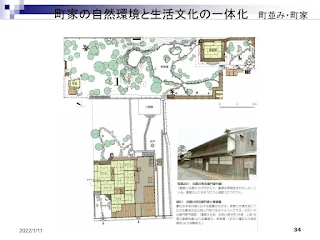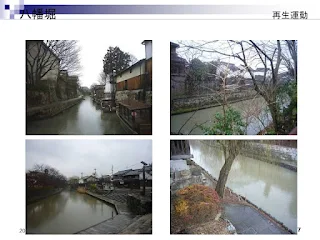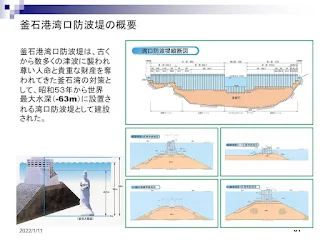基調講演「布野修司と考える 朱田の景観」,蔚山科学大学,2011年5月4日
このブログを検索
2022年4月28日木曜日
2022年4月27日水曜日
2022年4月26日火曜日
Shuji Funo,Yasushi TAKEUCHI et al (2009),Report to UNESCO Jakarta, Damage Assessment on Cultural Heritage in West Sumatra,National Research Institute for Cultural Properties, Tokyo,December 2009
Shuji Funo,Yasushi TAKEUCHI et al (2009),Report to UNESCO Jakarta, Damage Assessment on Cultural Heritage in West Sumatra,National Research Institute for Cultural Properties, Tokyo,December 2009
2022年4月25日月曜日
The Declining Capital, IIAS NEWSLETTER, Leiden University, 31 July,2003
The Declining Capital, IIAS NEWSLETTER, Leiden University, 31 July,2003
IIAS Newsletter Leiden University
Tokyo:
The Declining Capital
From its origins as a small castle town until the end of the Edo era, Tokyo’s
urbanization followed an orthogenetic process. In the mid-seventeenth century Tokyo’s
population numbered one million, in a league with London and Paris. By the eve
of the Meiji Restoration in 1868 Tokyo resembled a huge urban village. Twice
destroyed in the twentieth century – by earthquake in 1923 and aerial
bombardment in 1945 – Tokyo emerged as a speculator and builders’ paradise, a
true global city, in the 1980s. Today Tokyo proper counts over 12 million
inhabitants while one-fourth of the Japanese population lives in the greater
metropolitan area. The mega-city, warns the author, is
awaiting another catastrophe.
By Shuji Funo
The politically powerful construction industry was one of the motors of
rapid post-war economic growth. Relying heavily on the ‘scrap and build’
method, concrete and steel transformed the Japanese landscape. In the late
1960s, construction accounted for over 20 per cent of GDP. High growth gave way to a period of stable but lower growth in the wake of the 1973 energy crisis; heavy industries lost ground to light industries based on advanced science
and technology. The focus of urban development shifted from
outward expansion to the full development of already urbanized areas. Money generated by the speculative
bubble of the 1980s transformed Tokyo into a global city, wired to the
dynamic movements of the world capitalist economy.
The postmodern city: Tokyo at its zenith
The urban issues Tokyo faced in the mid-1980s were quite different from those
it had faced in the past. The city had reached its limits for horizontal
expansion. The ‘Tokyo Problem’ and ‘Tokyo Reform’ became pressing issues for
debate: scholars and critics discussed the negative effects of Tokyo’s
political, economic and cultural dominance, as well as possibilities for
relocating the Japanese capital.
In the 1980s Tokyo’s status as one of the world’s financial centres attracted
an unprecedented influx of foreign businessmen and workers. The resulting
demand for centrally located office space and 24-hour facilities sparked a
speculative building rush that dramatically transformed the cityscape. Western
architects with postmodern designs were invited to give Tokyo a fashionable
facelift, befitting its status as a global city.
Further urban development necessitated the search for new frontiers. The
first frontier was unused public land in the city centre. Downtown properties
were snapped up by investors, while large real-estate companies launched re-development
projects. Many of these destroyed the fabric of existing downtown communities. The
second frontier was the sky: Tokyo still had more space in the air than New
York. The Manhattan Project, revived after a long hiatus, is currently renewing
the central business district around Tokyo Station. The third frontier was
under the ground, the so-called geo front. A project to create an underground
city of 500,000 inhabitants was seriously proposed. The fourth and final
frontier was the Tokyo waterfront, hitherto the home to dockyards and
factories. Under the title ‘Urban frontier’, the World
City Exposition Tokyo ‘96’ directed expansion towards Tokyo Bay.
New technologies,
production systems, and
building materials shaped Tokyo’s urban transformation. Since the 1960s
air-sealing aluminium sashes have been de
rigueur, meaning that all dwelling units are now air-conditioned. So-called
intelligent office buildings came into fashion in the 1980s. Domed,
climate-controlled stadiums allow football games to be played in the midst of
storms. The daily lives of Tokyo’s citizens have become completely divorced from nature; most space in Tokyo is
artificially controlled by computer. Electronic
conglomerates enjoying symbiotic relations with government are prominent
players in this development process. So are the large construction companies, still
wielding considerable political power. Tokyo is a temporary metropolis that is constantly changing: in this
repeated process of scrap and build, the city is losing its historical memory.
‘The 2003 Problem’
Nobody controls a global city like Tokyo; nobody knows who is behind the
constant change. Something invisible, which we might call the World Capitalist
System, guides the transformation of the Japanese capital.
With the glory days of the bubble economy long gone and Tokyo suffering
from economic stagnation and post-bubble debt, a curious phenomenon can be
observed. Along the Tokyo waterfront many new office buildings and flats are under
construction. The number of high-rise flats newly built in 2002 is said to be unprecedented.
Now as before, this construction is driven by the
speculative activities of real estate agents and investors. While rumour
of ‘The 2003 Problem’ is spreading – companies will move to the waterfront
leaving old inner city office buildings unoccupied – predictable oversupply is
the result of individual
realtors and developers pursuing their own short-term interests, even as they know
they will later suffer.
The central government
has tried to influence the fluctuating annual number of dwelling units built by
reforming tax incentives. The current slogans of the central government are ‘Restructuring’
and ‘Urban rebirth’. What is actually happening, however, is the hollowing out
of the inner city. Ishihara Shintaro, governor of Tokyo Metropolitan Municipality, has declared sixteen policy goals,
the first of which is to ‘Create an urban city that facilitates a balance of
jobs and residences’. It consists of two strategies: ‘Promotion of
inner city residence’ and ‘Fundamental reform of the Metropolitan housing system’. The former includes bringing
workplaces and residential areas together in the suburban Tama area. The results have thus far been disappointing: the only change for most
people has been their place of work. The remaining hope is that old inner city office
buildings will be converted into homes.
The central
government has established a special board called ‘Urban rebirth’ and has opted
to deregulate building codes and urban planning laws to stimulate building
activity. Local governments can now rezone areas and make decisions on the
restructuring of districts. Most local governments, however, are suffering from
financial pressures and lack funds to realize new projects. And while policymakers believe promoting
building activity through deregulation is the only way to economic recovery,
the idea seems far-fetched.
Tokyo has its natural limits; the city cannot grow indefinitely. Obviously, the city needs powerful leadership and the participation
of citizens to implement new ideas. Unfortunately, while formal procedures for
citizen involvement have been proposed, they do not function effectively: people
seem reluctant to participate when their private circumstances are not
affected. Without citizen input, ‘The 2003 Problem’ seems here to stay. Though blackouts and drought already
threaten the metropolitan area each summer, the current
system of the production and consumption of spaces, however, is controlled by
the profit motive, not social or ecological responsibility. Tokyo, on its current
course, is awaiting catastrophe.
Dr Shuji Funo is professor at Kyoto University and a specialist in the field of
Asian design and urban planning. The Architectural Institute of Japan (AIJ) awarded
him for his PhD dissertation ‘Transitional Process of Kampungs and Evaluation
of Kampung Improvement Program in Indonesia’ (1991). He recently designed
Surabaya Eco-House, an experimental housing project, and is now conducting
research on Dutch colonial cities.
i53315@sakura.kudpc.kyoto-u.ac.jp
funo@archi.kyoto-u.ac.jp
[Illustration]
[1]
[caption] The
curious rush of building on the Tokyo waterfront, 2003
[credit] Courtesy
of Shuji Funo
2022年4月24日日曜日
2022年4月23日土曜日
”建築学科”の崩壊と職人大学, 建築年報1999, 日本建築学会, 199907
”建築学科”の崩壊と職人大学, 建築年報1999, 日本建築学会, 199907
”建築学科”の崩壊と職人大学
布野修司
「”建築学科”の崩壊」とは、また、随分刺激的な題を頂いたものである。””とあるから、”建築学科”にも色々あって崩壊するものもあれば、そうでないのもある、ということか、などとと考えてしまう。確かに、この間理工学系部の再編成に伴って、日本中の大学から”建築学科”という学科名が消えていくという事態が続いている。大学院重点化ということで、新しい専攻の名が求められたということもある。やたらに増えているのが、「環境」(「文化」「国際」)という名のつく学科である。因みに、筆者の属する専攻も「生活空間学専攻」と変わった。
”建築学科”という名前が消えていくのは寂しいことではあるが、日本における”建築”を取り巻く環境が大きく変わり、建築界が構造改革せざるを得ないこと、また、それに伴い”建築学科”も変貌せざるを得ないことは否定できないことである。
右肩上がりの成長主義の時代は終わったのであり、建設活動はスローダウンせざるを得ない。フローからストックへ、は趨勢である。農業国家から土建国家へ、戦後日本の産業社会は転換を遂げてきた。建設投資は国民総生産の2割を超えるまでに至る。”建築学科”は1960年代初頭から定員増を続け、各大学に第二の建設系学科がつくられた。しかし、今や、”建築学科”はさらには必要ないだろう。建設ストックが安定しているヨーロッパの場合、建設投資は一割ぐらいだから、極端に言うと、半減してもおかしくない。”建築学科”の崩壊(定員割れ)と呼びうる現象の背景には、日本の産業構造の大転換がある。
しかし、”建築学科”の崩壊は、より深いところで進行しているのではないか。単に量(建設量、建設労働者数、学生数)の問題であるとすれば、淘汰の過程に委ねるしかないだろう。時代に対応できる人材とそれを育てうる”建築学科”のみが生き残る。ストック重視となれば、維持管理の分野がウエイトを増すであろう。需要に従って建設業界が再編成されるのは必然である。”建築学科”のカリキュラムも見直しが必要となる。しかし、問題はそれ以前にある。
端的に言って、”建築家”(建築士)の現場離れの問題が本質的である。現場の空洞化、”職人”世界の崩壊の問題である。さらに、建設技術における専門分化の徹底的な進行の問題がある。建築という総合的な行為があらゆる局面で見失われつつあるのである。
”建築学科”における教育研究の問題が以上のような日本の建築界が抱える問題と密接に結びついていることはいうまでもない。日本の”建築学””建築学科”は「工学」という枠組みの中で育ってきた。学術、技術、芸術の三位一体をうたう日本建築学会は工学分野ではかなり特異である。しかし、建築の設計という行為が学術、技術、芸術の何れにも関わる総合的な行為であることは洋の東西を問わない。大きな問題は”建築学科”の特質がなかなか一般に理解されないことである。例えば、”建築学科”のカリキュラムにおいて、総合的トレーニングの場であるべき”設計教育”は各大学において必ずしも中心に位置づけられているわけではない。教員の資格については専ら学術的業績(論文の数)が問題にされる。建築教育は専ら座学で、実習や研修は位置づけが低い。
大きく視野を広げれば日本の教育体制の全体が関わっている。いわゆる偏差値社会の編成である。高校、大学への進学率が高まり、ペイパー・テストによって進学と就職が決定される、そんな一元的な社会が出来上がった。建設産業の編成としては、”職人”世界から”建築家(建築士、建築技術者)”世界への流れが決定的になった。学歴社会は、大工棟梁になるより一級建築士になる方がいい、という価値体系に支えられている。結果としてわれわれが直面するのが建設産業の空洞化である。
1990年11月27日、サイト・スペシャルズ・フォーラム(SSF)という小さな集まりが呱々の声を上げた。サイト・スペシャルズとは耳慣れない造語だが、優れた人格を備え、新しい技術を確立、駆使することが出来る、また、伝統技能の継承にふさわしい、選ばれた現場専門技能家をサイト・スペシャリストと呼び、そうした現場の専門技能家、そして現場の技術、工法、機材、労働環境まで含んだ全体をサイト・スペシャルズと定義づけたのである。建設現場で働く、サイト・スペシャリストの社会的地位の向上、待遇改善、またその養成訓練を目的とし、建設現場の様々な問題を討議するとともに、具体的な方策を提案実施する機関としてSSFは設立された。スローガンは当初から’職人大学の設立’であった。主唱者は日綜産業社長小野辰雄氏。中心になったのは、専門工事業、いわゆるサブコンの社長さんたちである。いずれも有力なサブコンであり、”職人”の育成、待遇改善に極めて意欲的であった。
顧問格で当初から運動を全面的に支援してきたのは内田祥哉元建築学会会長。内田先生の命で、田中文男大棟梁とともに当初から筆者はSSFの運動に参加してきた。それからかなりの月日が流れ、その運動はいま最初の到達点を迎えつつある。具体的に「国際技能工芸大学」が開学(2001年4月予定)されようとしているのである。筆者は、その母胎となる国際技能振興財団の評議員を勤めさせて頂いている。バブルが弾け「職人大学」の行方は必ずしも順風満帆とは言えないが、SSFの運動がとにもかくにも大学設立の流れになった。ある感慨がある。
SSFの主唱者小野辰雄氏はもともと重量鳶の出身である。その経験から足場メーカーを設立、その「3Mシステム」と呼ばれる支保杭と足場を兼ねる仮設システムを梃子として企業家となった。その活動はドイツ、アメリカ、アジア各地とグローバルである。その小野氏がどうしても我慢がならないことが現場で働く職人が大事にされないことである。当時はバブル経済華やかで職人不足が大きな話題であった。3K(きたない、きつい、給料が安い)職場ということで若者の新規参入がない。後継者不足は深刻であった。そうした中で、職人が尊敬される社会をつくりたい、そのために”職人大学”をつくりたい、というのが小野氏以下SSF参加企業の悲願であった。
最初話を聞いて大変な何事かが必要だというのが直感であった。そこで藤沢好一(芝浦工業大学)、安藤正雄(千葉大学)の両先生に加わって頂いた。また、土木の分野から三浦裕二(日本大学)、宮村忠(関東学院大学)の両先生にも加わって頂いた。当初はフォーラム、シンポジアムを軸とする活動であった。海外から職人を招いたり、マイスター制度を学びにドイツに出かけた。この間のSSFの活動はSSFニュースなどにまとめられている。
議論は密度をあげ、職人大学の構想も次第に形をとりだしたが、実現への手掛かりはなかなか得られない。そこで兎に角何かはじめようと、SSFパイロットスクールが開始された。第一回は佐渡(真野町)での一九九三年五月三〇日(日)から六月五日まで一週間のスクーリングであった。その後、宮崎県の綾町、新潟県柏崎、神奈川県藤野町、群馬県月夜野町、茨城県水戸とパイロットスクールは回を重ねていく。現場の職長さんクラスに集まってもらって、体験交流を行う。そうした参加者の中から将来のプロフェッサー(マイスター)を見出したい。そうしたねらいで、各地域の理解ある人々の熱意によって運営されてきた。現場校、地域校、拠点校と職人大学のイメージだけは膨らんでいった。カリキュラムを考える上では、並行して毎夏、岐阜の高根村、加子母村を拠点として展開してきた「木匠塾」(一九九一年設立 太田邦夫塾長)も大きな力になった。
そして、SSFの運動に転機が訪れた。KSD(全国中小企業団体連合会)との出会いである。SSFは、建設関連の専門技能家を主体とする、それも現場作業を主とする現場専門技能家を主とする集まりであるけれど、KSDは全産業分野をカヴァーする。”職人大学”の構想は必然的に拡大することになった。全産業分野をカヴァーするなどとてもSSFには手に余る。しかし、KSDは全国中小企業一〇〇万社を組織する大変なパワーを誇っている。
KSDの古関忠雄会長の強力なリーダーシップによって事態は急速に進んでいく。「住専問題」で波乱が予想された通常国会の冒頭であった(一九九六年一月)。村上正邦議員の総括質問に、当時の橋本首相が「職人大学については興味をもって勉強させて頂きます」と答弁したのである。
「産業空洞化がますます進行する中で、日本はどうなるのか。日本の産業を担ってきた中小企業、そしてその中小企業を支えてきた極めてすぐれた技能者をどう考えるのか。その育成がなければ、日本の産業そのものが駄目になるではないか。そのために職人大学の設立など是非必要ではないか。」
”職人大学”設立はやがて自民党の選挙公約になる。
その後、めまぐるしい動きを経て、(財団)国際技能振興財団(KGS)の設立が認可され、その設立大会が行われた(一九九六年四月六日)。以後、財団を中心に事態は進む。国際技能工芸大学というのが仮称となり、その設立準備財団(豊田章一郎会長)が業界、財界の理解と支援によってつくられた。梅原猛総長候補、野村東太(元横浜国大学長)学長候補を得て、建設系の中心には太田邦夫先生(東洋大学)が当たられることが決まっている。一九九七年にはキャンパス計画のコンペも行われ、用地(埼玉県行田市)もあっという間に決まった。今は、文部省への認可申請への教員構成が練られているところである。
国際技能工芸大学(仮称)は、製造技能工芸学科(機械プロセスコース、機械システムコース、設備メンテナンスコース)と建設技能工芸学科(ストラクチャーコース、フィニッシュコース、ティンバーワークコース)の二学科からなる4年生大学として構想されつつある。その基本理念は以下のようである。
①ものづくりに直結する実技教育の重視
②技能と科学・技術・経済・芸術・環境とを連結する教育・研究の重視
③時代と社会からの要請に適合する教育・研究の重視
④自発性・独創性・協調性をもった人間性豊かな教育の重視
⑤ものづくり現場での統率力や起業力を養うマネジメント教育の重視
⑥技能・科学技術・社会経済のグローバル化に対応できる国際性の重視
具体的な教育システムとしては、産業現場での実習(インターンシップ)、在職者の修学、現場のものづくりを重視した教員構成をうたう。
教員の構成、カリキュラムの構成などまだ未確定の部分は多いがSSFの目指した”職人大学”の理念は中核に据えられているといっていい。
もちろん、設立される”職人大学”がその理念を具体化していけるかどうかはこれからの問題である。巣立っていく卒業生が社会的に高い評価を受けて活躍するかどうかが鍵である。
何故、文部省認可の大学なのか。”職人”の技能””工芸”を日本の教育システムのなかできちんと評価してほしい、という思いがある。人間の能力は多様であり、偏差値によって輪切りにされる教育体制、社会体制はおかしいのではないか、という問題提起がある。だから、ひとつの大学を設立すれば目標達成というわけにはいかない。実際、続いて各地に”職人大学”を建設する構想も議論されている。
ただ、数が増えればいいということでもない。問題は”職人大学”がある特権を獲得できるかである。具体的に言えば、”技能””工芸”に関わる資格の特権的確保である。”職人大学”の構想もそうした社会システムと連動しない限り、しっかり根づかないことは容易に予想される。例えば、日本型のマイスター制度が同時に構想される必要があるのではないか。
しかしそれ以前に、現場を大事にする、机上の勉強ではなく、身体を動かしながら勉強するそんな教育が何故できないのか、”建築学科”の再生がそれぞれの現場で問われていることは言うまでもないことである。
布野修司 履歴 2025年1月1日
布野修司 20241101 履歴 住所 東京都小平市上水本町 6 ー 5 - 7 ー 103 本籍 島根県松江市東朝日町 236 ー 14 1949 年 8 月 10 日 島根県出雲市知井宮生まれ 学歴 196...
-
traverse11 2010 新建築学研究11 Ondor, Mal & Nisshiki Jutaku(Japanese Style House):Transformation of Korean Traditional House オンドルとマル,そして日式住宅...
-
進撃の建築家 開拓者たち 第 11 回 開拓者 13 藤村龍至 建築まちづくりの最前線ー運動としての建築 「 OM TERRACE 」『建築ジャーナル』 2017 年7月(『進撃の建築家たち』所収) 開拓者たち第 12 回 開拓者 14 藤村龍至 ...







































































































